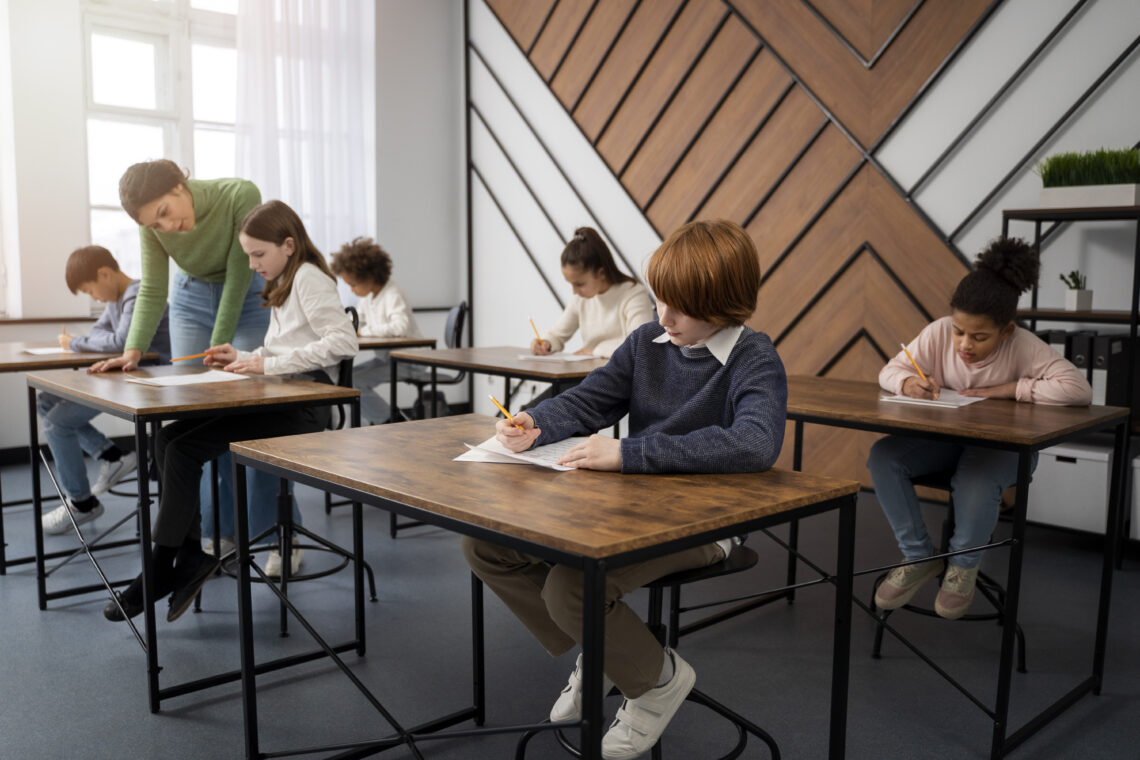A classroom community is more than a group of students sharing the same space. It’s a supportive environment built on trust, respect, and shared purpose, where every member feels valued and connected. When teachers take time to create a strong classroom community, they set the stage for deeper learning, better behavior, and stronger relationships.
What Is a Classroom Community?
A classroom community is the sense of belonging, safety, and collaboration among students and teachers. It goes beyond seating charts and lesson plans, it’s about creating an atmosphere where everyone works together toward common goals and feels responsible for the success of the group.
Why It Matters
A strong classroom community benefits everyone involved. Students feel more comfortable sharing ideas, asking questions, and taking academic risks. Teachers enjoy a more positive, cooperative environment. Learning becomes not only more effective but also more enjoyable.
Key Elements of a Strong Classroom Community
-
Belonging: Every student feels accepted for who they are.
-
Mutual respect exists between the teacher and students.
-
Shared Purpose: The class works toward common learning and behavioral goals.
-
Collaboration: Students help, support, and celebrate one another.
-
Responsibility: Everyone takes ownership of their actions and learning.
How to Build a Classroom Community
1. Start with Relationships
Learn students’ names quickly, understand their interests, and show genuine care. Sharing a little about yourself can help students see you as approachable.
2. Create Rules Together
Involving students in setting classroom expectations gives them a sense of ownership. Keep rules simple, positive, and focused on respect.
3. Foster a Safe Learning Space
Make it clear that mistakes are part of learning. Address disrespect immediately and fairly. Encourage encouragement—students should lift each other, not put each other down.
4. Encourage Collaboration
Use group work, peer feedback, and cooperative games. Rotate groups so students connect with different classmates.
5. Give Every Student a Voice
Incorporate discussion strategies like “think-pair-share” and hold regular class meetings where students can share their thoughts and concerns.
6. Celebrate Achievements and Kindness
Recognize not only academic success but also effort, improvement, and acts of kindness. Simple traditions, like “Good News Friday,” can strengthen bonds.
7. Model the Behavior You Expect
Show respect, patience, and responsibility in your own actions. Consistency builds trust.
Benefits of a Strong Classroom Community
-
Higher Engagement – Students are eager to participate and learn.
-
Improved Academic Outcomes – A supportive space fosters deeper thinking and problem-solving.
-
Better Behavior – Respectful relationships reduce conflicts and distractions.
-
Stronger Peer Connections – Students build friendships and learn teamwork.
-
Emotional Well-being – Confidence grows when students feel safe and valued.
The Long-Term Impact
A strong classroom community doesn’t just help during the school year—it teaches students communication, empathy, and problem-solving skills that last a lifetime. They leave the class with the ability to work with others, respect different viewpoints, and take responsibility for their contributions—skills they will need in future education, careers, and personal relationships.
Final Thoughts
Building a classroom community takes time, consistency, and intention, but the rewards are lasting. When students feel connected, respected, and engaged, the classroom becomes more than a place to learn—it becomes a place where they belong.
Visit for More: Softreads




